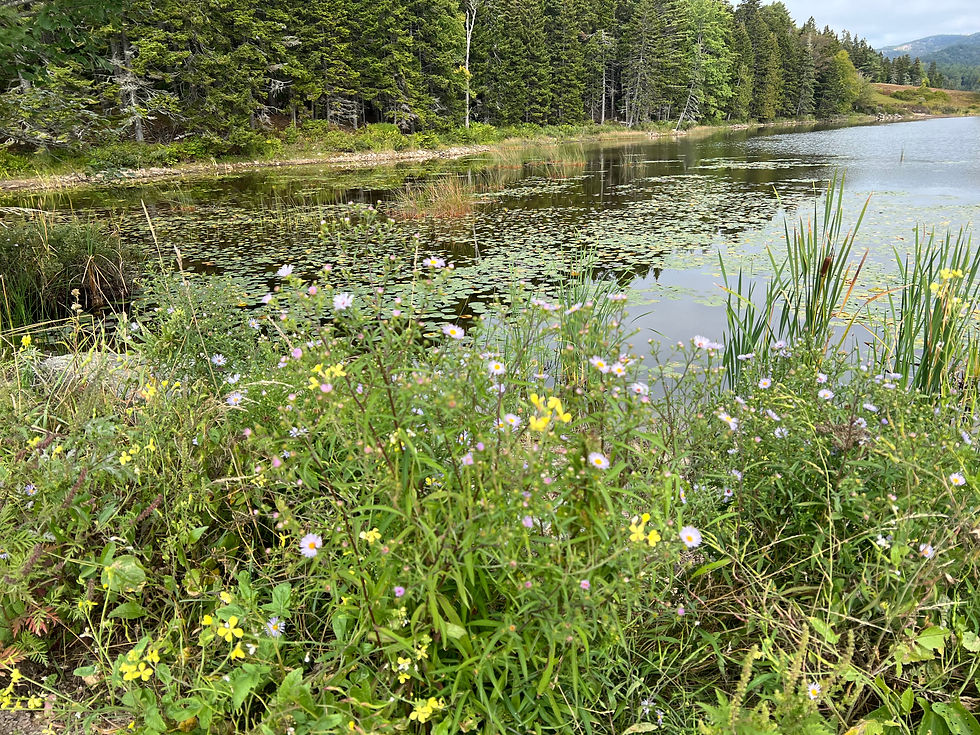A deep dive into the Asteraceae family
- Tate Bushell

- Sep 6
- 2 min read
Updated: Sep 22
I’ve been swimming! Swimming in the terms pappus, floret, palea, ray, disk, and the wonderfully multi-syllabic capitulescence, involucre, and zygomorphic. Not exactly everyday vocabulary, but in botany these words matter. They help us describe and distinguish certain plants.

Two weeks ago, I had the great opportunity to study the Asteraceae (aka composite family), one of the largest plant families on the planet, and one that is well represented on the lands of the Preserve. Most members of the Asteraceae family are herbaceous plants that can be annual, biennial, or perennial, though the family also includes shrubs, vines, and even trees. A defining feature of the family is their compound flower heads, called capitula, which may contain hundreds of tiny individual florets surrounded by a whorl of protective bracts or leaves.
Asters and goldenrod at the Preserve are in the Asteraceae family, as are our joe-pye weeds, thistles, dandelions, rudbeckia, hawkweeds, and chicory. If you zoom out to include all plants east of the Rockies, the composite family incudes echinacea (cone flowers), helianthus, coreopsis, sunflowers, cosmos, ironweeds and more. If you picture a flower with a round head surrounded by colorful petals, it’s probably an Asteraceae.
I was able to delve into this complex corner of botany at Eagle Hill Institute in Steuben, Maine (just an hour from Mount Desert Island), a place that hosts week-long natural history seminars taught by experts (often regional/national authorities) in a setting that includes a classroom/laboratory, modest room and board accommodations, and field sites across Downeast Maine.
The daily schedule is simple and immersive: breakfast, class, lunch, class, dinner, class, interspersed with field trips and plenty of microscope time. The pace is relaxed but the focus is serious. Students are both amateur and professional and skill levels can vary widely. Class sizes are small (often 5-12 students) which means lots of one-on-one attention. Students of all ages travel from across the country to take part in seminars, and I am routinely the person who traveled the least distance to attend. Eagle Hill is a local gem!

I chose this course because the Asteraceae is one of the most important plant families in North America—and in Maine—both for its sheer number of species and its value to insect pollinators. These plants are unique and often tricky to identify because of their tiny composite flowers, so a formal class offered the best way to study them in depth. What I’ve learned will help me better understand the plants in our meadows, where many species naturally thrive.
Occasionally I’ll know someone in class, and as it turned out, Helen Koch—longtime Preserve volunteer with experience at the Abby Aldrich Rockefeller Garden and McAlpin Farm—was my classmate last week!
I am not the only Preserve staffer to benefit from Eagle Hill seminars. Over the years, colleagues, supported by the Preserve’s professional development budget, have taken courses on fungi, bryophytes and insect photography. This summer, veteran Natural Lands Steward Ed Hawes, studied Downeast Maine’s trees and shrubs with a professional from Vermont.





Comments